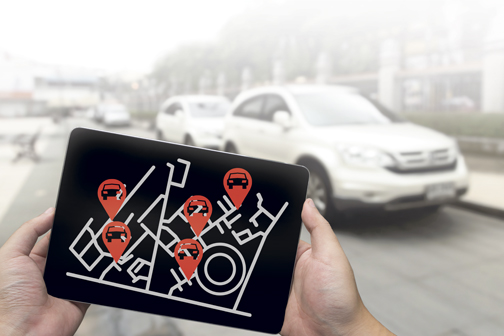Ridesharing and the impact of telematics
Since the launch of Uber in 2011, the practice of ridesharing has had a significant impact on the auto insurance market, blurring the distinction between personal and commercial lines coverage. In fact, with multi-billion-dollar companies like Uber and Lyft operating in hundreds of cities across the country, and millions of users serviced by hundreds of thousands of drivers, the explosive growth of this on-demand service has created a new type of exposure—one that carriers and their agents need to address in order to meet the insurance needs of their customers.
“While two drivers may have the exact same profile based on traditional criteria—things like location, age, driving history, and so on—when you compare their actual driving behavior, different stories unfold about the type of risk the carrier is actually insuring.”
—Cletus Nunes
Director of Sales
Octo Telematics North America
Throughout this past summer, 48 states and the District of Columbia have enacted legislation aimed at addressing insurance for transportation network companies. Some carriers have taken a conservative approach by not offering coverage for transportation network drivers. Still, competition is strong among those insurers that have elected to cover these risks—those that have faced the underwriting and rating challenges head on.
Several companies have introduced endorsements that modify or eliminate traditional exclusions. Other amendments clarify when coverage applies and how it interacts with other applicable policies. It is imperative that agents continue to talk to their customers about these issues, identify their coverage needs, and help them obtain the proper coverage.
In addition to the nature and scope of the coverage that insurers are providing, new underwriting criteria have been developed to ensure accurate risk evaluation, selection, and pricing. This is driving changes to marketing tactics, as well as customer acquisition and retention strategies. Traditional rating programs and more sophisticated rating structures alike are grappling with new data elements and rating variables to account for changes in driving behavior and exposures.
Telematics
Linking telematics data to drivers who may or may not be operating an insured vehicle at a given point in time further complicates underwriting. It presents challenges in insuring these emerging risks. Telematics has long been used for assessing true driver behavior for rating purposes.
According to Cletus Nunes, director of sales at Octo Telematics North America, “While two drivers may have the exact same profile based on traditional criteria—things like location, age, driving history, and so on—when you compare their actual driving behavior, different stories unfold about the type of risk the carrier is actually insuring.
“If an insured driver also drives for a ridesharing program, their driving behavior becomes even more critical,” Nunes adds. “This is true, especially if they have not obtained the proper insurance to cover the risk associated with this type of vehicle use.”
Properly insuring and rating rideshare drivers and their vehicles will continue to be an issue for the insurance industry. Check any social media platform related to the sharing-economy community and you’ll find countless tips on how to avoid paying insurance surcharges for using a personal vehicle in a ridesharing program.
While the concept of premium evasion is not unique to ridesharing programs, Nunes points out that telematics can play an important role in uncovering such fraud. And just like their role in helping customers obtain the right coverage, agents also play a critical part in identifying, capturing, and reporting data at not only the point of sale, but throughout the subsequent servicing and renewal of existing business.
“Telematics data can tell a lot about driving behavior beyond simply identifying good or bad driving habits,” Nunes explains. “For example, data shared by our company shows that patterns of trips can indicate the primary use of a vehicle. A vehicle being used in delivery will have a number of trips in a logical pattern. They tend to be focused on gaining efficiency, and look more like a spider web when mapped.”
In contrast, he adds, “A vehicle being used in a ridesharing program will have trips resembling spaghetti on a map. You’ll see few repeat destinations, except for the insured’s home. You also may see frequent or daily trips to airports, train stations, and other transportation hubs.” In the event an accident occurs, access to this level of data could be significant for a carrier in evaluating and adjusting a claim.
Insurance firms that can adapt to changing driver behavior, new trends in vehicle ownership and use, and emerging technologies and data gathering are poised to succeed in the auto insurance market of the future. As an advisory organization, AAIS supports the auto insurance industry in its efforts to adapt to these changes and succeed in a new environment.
The author
Casey Brewer is the auto product manager at AAIS. Established in 1936, AAIS is a national, member-owned, nonprofit advisory organization that provides P-C carriers insurance forms, rules and loss-cost information.





